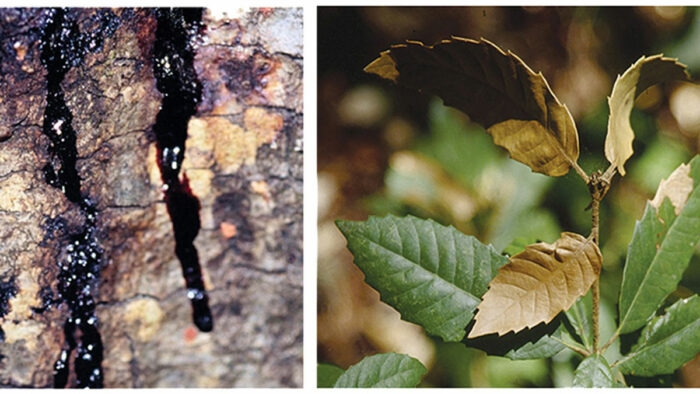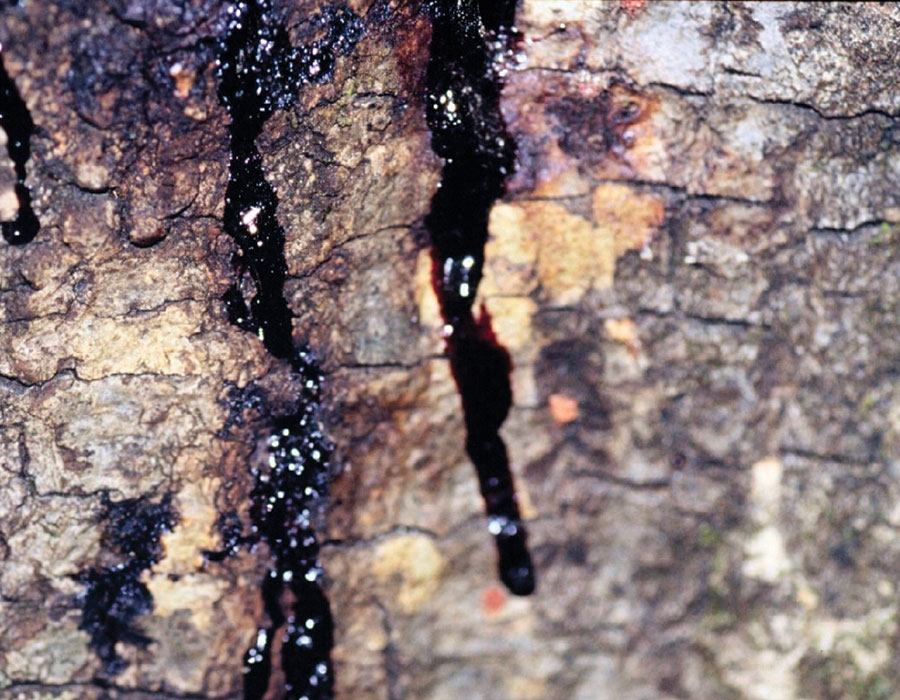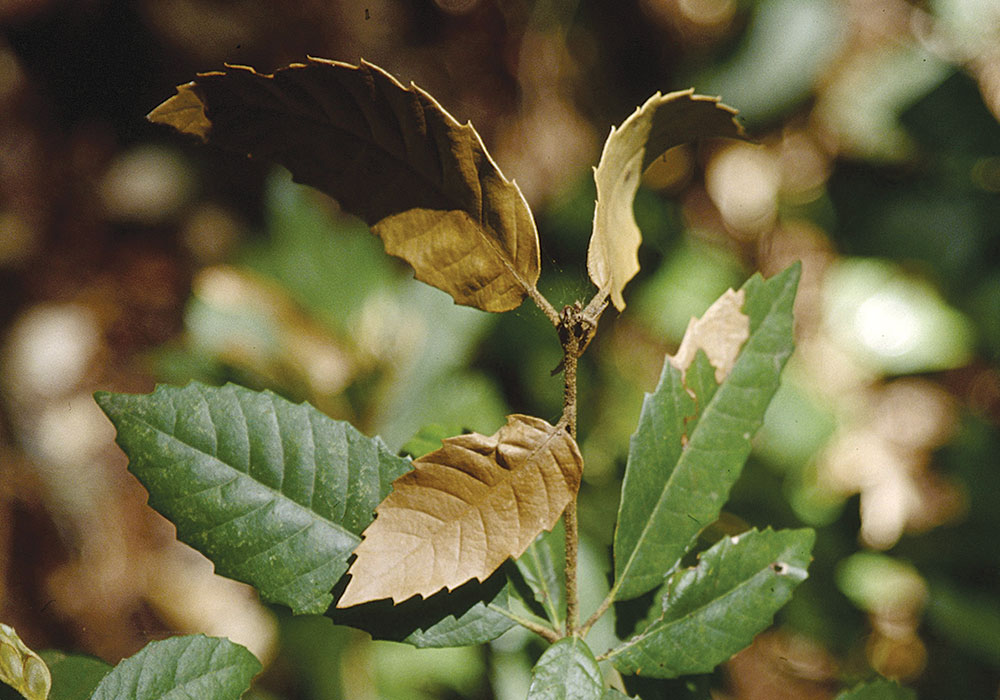
While folks on the West Coast probably hear quite a bit about sudden oak death, it is an important plant disease that everyone should have on their radar. Sudden oak death (SOD) is caused by the oomycete pathogen Phytophthora ramorum. As the name implies, oak species (Quercus spp. and Notholithocarpus spp.) seem to be the most seriously impacted plants here in the United States, though more than 100 woody plant species can also host the disease, including Rhododendron species. It is a disease of particular concern because of its extensive host range, high rate of lethality, and need for complex management. Once plants are infected, they do not recover. In California, entire mountainsides of oak forests have been killed by SOD, leaving dead, dry, fire-prone trunks behind.

Where has sudden oak death become a problem?
The pathogen that causes SOD has been documented in North America and Europe. According to the SOD website produced by the U.S. Department of Agriculture’s Animal and Plant Health Inspection Service (USDA-APHIS), this pathogen is considered established in 16 California counties (Alameda, Contra Costa, Del Norte, Humboldt, Lake, Marin, Mendocino, Monterey, Napa, San Francisco, San Mateo, Santa Clara, Santa Cruz, Solano, Sonoma, and Trinity) and in Curry County, Oregon. In 2005, shortly after the disease was first described, it was detected on nursery stock shipped from California to various other states. The nursery stock was destroyed, and quarantine protocols were established for all detected counties to prevent the movement and spread of SOD.

In Europe, SOD has been detected in Belgium, the Czech Republic, Denmark, Finland, France, Germany, Ireland, Italy, the Netherlands, Norway, Poland, Slovenia, Spain, Sweden, Switzerland, and the United Kingdom. Most of the detections have been on plants imported or cultivated from other countries. It remains unclear how or from where the pathogen was initially introduced.

What are the symptoms?
SOD can initially present like closely related root-rot or crown-rot diseases with wilting leaves. Symptoms associated with a P. ramorum infection vary by host plant but generally involve vascular damage, a disruption to the normal transport of water, leaf wilting, and eventual death. Secondary pests and pathogens (insects such as boring beetles and opportunistic fungi, in particular) often will colonize a sick plant after it has already been infected with P. ramorum, making identification of the original causal agent more challenging.
With oaks, symptoms associated with SOD include shoot wilting as well as the appearance of cankers along the trunk that “bleed” reddish-brown sap. Leaves that wilt often remain attached to branches and do not fall to the ground. Sap from cankers often stains the lower bark of the tree and may attract insect pests. The canker “bleeding” is much more noticeable during dry weather, as it is washed away by rain. Any of these symptoms could also be caused by other pathogens, so it is best to have your plant tested by a plant diagnostic laboratory in your state to confirm the presence of P. ramorum. A positive result may mean that plants nearby will need to be destroyed to prevent the spread of SOD.
If I suspect sudden oak death, what should I do?
First, remind yourself and the folks around you not to move firewood to new locations, particularly out of the counties listed earlier as quarantine zones. Buy local, burn local. In addition to traveling on firewood, this pathogen can hitchhike in infested soil on boots, bike tires, and muddy paws. If you have been in a forest or natural area where P. ramorum is established, clean shoes, pets, and equipment before leaving the area. Rinse well with water, and disinfect with soap or rubbing alcohol, if available. Many parks in positive counties have signs, educational materials, and disinfection stations available at park entrances.
If you observe the symptoms of canker bleeding on an oak in a positive county, the tree should be removed and destroyed. If you observe those symptoms on an oak in an area outside one of those quarantine areas, please photograph the plant, document its location, and submit a sample to your nearest plant diagnostic lab that is part of the National Plant Protection Laboratory Accreditation Program (NPPLAP). Call the lab first to confirm that it can accept regulated pathogens like P. ramorum or redirect you to the appropriate contact.
Nicholas Goltz, DPM, is a plant pathologist and extension educator located in the northeastern United States, where he helps growers and homeowners find holistic and comprehensive solutions for plant problems.


















Comments
Log in or create an account to post a comment.
Sign up Log in